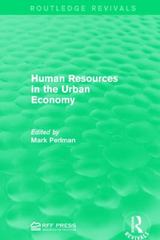Question
Marking a new chapter in environmental responsibility, The Coca-Cola Company has completed a major initiative in Canada: the transition to 100 per cent recycled plastic
Marking a new chapter in environmental responsibility, The Coca-Cola Company has completed a major initiative in Canada: the transition to 100 per cent recycled plastic for all 500ml bottles in its sparkling beverage portfolio (excluding caps and labels).
This shift brings a sustainable twist to iconic beverages like Coca-Cola, Sprite, Fanta and more; and the impact of this shift is significant.
Change is achieved, one recycled plastic bottle at a time
"When you look at a single bottle, it weighs only 21 grams," says Mika Unterman, Director of Sustainability Capabilities and Planning, at The Coca-Cola Company in Canada, "but when you think about how many of those bottles are out there, that leads to a cumulative impact," she adds.
That's because recycled plastic, or recycled polyethylene terephthalate (rPET), has a lower carbon footprint than virgin plastic.
"What that means on an annual basis for the Canadian market is 7,000 metric tons of CO2," says Unterman. That's the equivalent of taking 1,500 cars off the road each year.
We don't need to convince Canadians to recycle. Instead, we're showing them that when they do recycle, we're taking care of things from there.
Mika Unterman, Director of Sustainability Capabilities and Planning, at The Coca-Cola Company in Canada
Making such big shifts towards circularity and sustainability is no small task. The first step is making sure that the new material will adhere to health, safety, stability and consumer desirability standards.
Then, it's about acquiring enough rPET to meet production volumes and working with bottling facilities to shift their production. It's a logistics puzzle that relies on collaboration from many stakeholders to solve.
A signal to the recycling industry
"By announcing our move to recycled bottles, we are signaling to the recycling industry at large how serious we are," says Unterman. "These are problems that require collaboration, no one can do this in isolation."
To that end, The Coca-Cola Company was a founding signatory of the Canada Plastics Pact, which seeks to eliminate harmful packaging and encourage material innovation. Unterman calls that work "critically important," adding that "this is how we connect with the industry as a whole and progress system-level initiatives."
Unterman believes that it's crucial for companies to give consumers options to make choices based on their values.
"Fortunately, the Canadian consumer is already so dedicated to recycling," says Unterman. "We don't need to convince Canadians to recycle. Instead, we're showing them that when they do recycle, we're taking care of things from there."
That also means making sure that plastic bottles can be re-made into future plastic bottles as many times as possible. "Often, used bottles get turned into recycled polyester, but once that happens, it cannot be recycled again," explains Unterman. "The beauty of rPET is that a bottle can have many lives and dramatically reduce the need for new virgin plastic."
The business case for sustainability
Part of Unterman's job is also to make sure sustainability permeates throughout the business. That might sound cynical but is in fact how you ensure that sustainability targets actually get met.
That's because without a clear roadmap for getting it done, these kinds of initiatives "simply don't stick," she says.
Unterman says that doing this work slowly, methodically and rationally makes sustainability work long-term. "With the scale and complexity that we're dealing with, you cannot make hasty decisions because the reverberations of that can be monumental," she adds.
Unterman often gets asked how she feels about working on sustainability at The Coca-Cola Company. "I'm incredibly proud to do the work that I do," she offers. "And I truly see the opportunity for change."
How can I relate this to micro economics topic
Step by Step Solution
There are 3 Steps involved in it
Step: 1

Get Instant Access to Expert-Tailored Solutions
See step-by-step solutions with expert insights and AI powered tools for academic success
Step: 2

Step: 3

Ace Your Homework with AI
Get the answers you need in no time with our AI-driven, step-by-step assistance
Get Started


